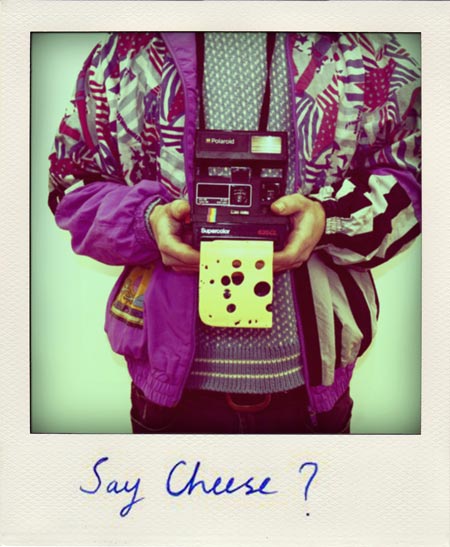 Street photography is a strangely controversial photographic genre. When I started blogging, I was a little surprised at how divisive it seemed to be within the photo community and its ability to get people worked up, whether they were in the 'for' or 'against' camp. As with many other photographic genres 'street photography' is a pretty broad appellation. There is no dictionary definition of it but a fair assumption would be that it refers to photographs taken in the street (I won't wade in to the debate on whether those photographs have to be 'straight' i.e. not to have undergone any manipulation, as that is a blogpost in and of itself), which seems to allow for a fair bit of artistic license. And yet, street photography seems to find itself in a bit of an artistic ghetto, often being, or feeling, completely ignored by the art world. I have already added to the recent debate surrounding Paul Graham's essay The Unreasonable Apple on this subject, which, although it doesn't deal with street photography specifically, is a good place to start to get an idea of what the fuss is about.
Street photography is a strangely controversial photographic genre. When I started blogging, I was a little surprised at how divisive it seemed to be within the photo community and its ability to get people worked up, whether they were in the 'for' or 'against' camp. As with many other photographic genres 'street photography' is a pretty broad appellation. There is no dictionary definition of it but a fair assumption would be that it refers to photographs taken in the street (I won't wade in to the debate on whether those photographs have to be 'straight' i.e. not to have undergone any manipulation, as that is a blogpost in and of itself), which seems to allow for a fair bit of artistic license. And yet, street photography seems to find itself in a bit of an artistic ghetto, often being, or feeling, completely ignored by the art world. I have already added to the recent debate surrounding Paul Graham's essay The Unreasonable Apple on this subject, which, although it doesn't deal with street photography specifically, is a good place to start to get an idea of what the fuss is about.
To use a musical analogy, I sometimes think of street photography as the jazz of the photography world. A genre that requires great timing, a strong sense of improvisation and that appeals especially to men with beards. Arguably the progression of street photography over time has mirrored that of jazz pretty closely. Jazz went through a series of creative explosions in the 50s, 60s and 70s through which the genre was constantly radically redefined. Since then, it is generally perceived to have been unable to reinvent itself and people think of it as an old-school genre rather than a contemporary one. I think much of the criticism that is levelled at street photography follows a similar line.
I am like Switzerland in my position on street photography: neutral. I'm not instinctively drawn to it, but I definitely don't think of it as irrelevant or unworthy of a place in the art world. So I was intrigued when Nick Turpin recently sent me a copy of his latest book, 10, 10 years of in-Public celebrating ten years of in-Public, the street photography collective started by Turpin that is now twenty members strong. This seemed like a good opportunity to see a broad cross-section of what is going on in street photography, with ten images from each of the group's members. I won't name them all here, but a special mention has to go to fellow bloggers Blake Andrews and Jeffrey Ladd.
It's always difficult to review a book that covers as much material as 10 as it is never going to be entirely coherent with this many different voices being represented. For me the real strength of the book is that it makes a strong case for the continued relevance of street photography today and more importantly for how diverse a genre it can be. To go back to my musical analogy, yes this is a compilation album, but its more like one of those artfully put together Soul Jazz numbers than a 'Now That's What I Call Music' #472. You get work from right across the spectrum: classic be-bop images, fizzing hard-bop, free jazz, to the more spacey ECM ("most beautiful sound after silence") style ... thankfully I didn't spot any easy listening shots in here.
There are some attributes that are common to much of the work in this book: a sense of humour, a penchant for the surreal, but the overriding impression I got was one of a real diversity in style and approach. For my money, street photography really comes into its own when these moments captured on the fly can be woven into a broader tapestry of some kind, not necessarily a narrative, but tied together in a way that transforms them into something more than a collection of well-composed moments. This isn't the case of all the photographers in the book, but when it is, as in the case of Trent Parke (whose recent book Bedknobs and Broomsticks sold 1,000 copies in three days), it can be really rewarding.
The book includes an essay by the Guardian's Jonathan Glancey and interviews of all the photographers by the photography writer David Clark. Rather than posting several images, you can get a nice preview of the contents of the book in the slideshow below put together by Turpin. 10 is recommended, if nothing else as proof that street photography is alive and well.
http://vimeo.com/13094478
10 years of in-Public, London: Nick Turpin Publishing, Hardback, colour and black-and-white plates.
Rating: Recommended





